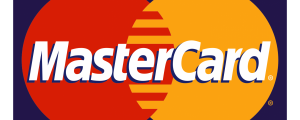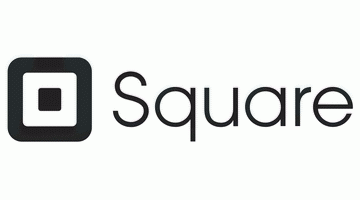Updated on November 22, 2021
Because several U.S merchant see no immediate threat from counterfeit card fraud, they are still holding against EMV and business goes on. But they might all be forced to upgrade due to the obvious change in payment card acceptance. This year MasterCard has expanded to new 2-series card account numbers, Due to this fact some merchant are hearing from their various vendors that they have to upgrade their equipment or else they will lose support for card payment, because of the mastercard rule.

Years ago the push for the new 2-series BIN (bank identification number) card started, and recently Mastercard began introducing card account numbers starting with “2,” adding to its existing account numbers beginning with “5” to accommodate the explosive growth recently. (The initial compliance deadline for merchants was Jan. 1, 2017, but last year Mastercard has extended it by six months, to this year June.)
Most of the burdens of readying the merchants to accept 2-series cards are being beard by the acquirers, this involves a software update sent to terminals, said Chiro Aikat, the senior vice president of Mastercard’s product delivery.
For most of the merchants in the U.S, it will be seamless to accept 2-series cards, but Aikat acknowledged that some terminals may be too old to handle the software updates necessary.
“Those terminals that are 15 to 20 years old might require replacement and it’s difficult to know the exact numbers of those,” Aikat said.
Merchants with new terminals have also being informed by their service provider that they will be required to replace their hardware this year due to the Mastercard’s 2-series initiative.
A merchant in Scottsdale has been notified by Raleigh, N.C.- based First Citizens Bank, Ariz., who has declined to be identified that his Verifone VX510 payment terminal, which was new as at December 2011, will cease to accept cards after June 30, 2017 due to the fact that it’s not equipped to receive 2-series software update. However, a replacement terminal which includes software update support and EMV will cost $250.
This terminal model can accept software updates according to Verifone. It is a manual process, not automated and it is handled through the acquirer. Similar challenges can be faced by other small businesses and the scope of this group is not known.
“Legacy payment equipment is still being used by some segment of the small and medium business market, and this requires a terminal replacement, but we have seen this as an exception,” Marc Castrechini, the vice president of product management at Cayan explained.
It has been reported by analysts that payment terminals have a lifespan of five to seven years, but the hardware of many merchant can be kept operational beyond that range. “There are several terminals that are discounted and supposed to have been replaced, which doesn’t have software support,” said Rick Oglesby who is a principal with AZ Payments Group. Payment terminal models like VX510 may have the capability of handling a software update, he added, but software are not being provided for them by various acquirers.
Tim Sloane, the vice president payment innovation at Mercator Advisory Group has added that the cost of creating as well as distributing terminal update is exorbitant for the acquirer. However, this can be minimized by reducing the number of terminals supported.
“Just because a payment terminal can be updated with software doesn’t mean it will be,” Sloane added. In most scenario, merchants with equipment that are too old to support software update would be contacted by the acquirer and new terminal options would be discussed, Sloane predicts this may or may not cost extra amount. Those acquirers that can support the 2-series BINs with the aid of software update are working so as to meet Mastercard’s deadline.
So that merchant customers would be automatically be able to process 2-series card numbers, Cayan has made changes within its gateway and cloud-based platform to drive updates, and its system is being tested throughout its network now. “We are currently using awareness, education and increased support as well as research to make sure there are no disruptions in the authorization,” Cayan’s Castrechini said.
The Electronic Transactions Association likewise has been working intimately with Mastercard for a while to guarantee a smooth move to the 2-series account introduction, said Amy Zirkle, the ETA’s VP of industry affairs. “We’ve had discussion and also conducted webinars with senior executive groups to get the world ready and make sure merchants are also ready,” she said. Mastercard has said there is no likelihood that it will levy any fine on merchants in connection with the 2-series introduction. “Noncompliance doesn’t result in a direct fine always,” Mastercard’s Aikat said, that “it is difficult to predict” the level of effort needed by acquirers and merchants to complete the transaction to the 2-series.
Recently Mastercard began a “mystery shopping” process to know the number of merchants that are ready to accept the 2-series cards and drawing any conclusion now will be too early.
“Aikat said, we need to respond quickly to the shortage of account number that has been exacerbated by other market forces and tokenization,” he also noted that the growth of mobile wallets and e-commerce are driving rapid consumption of 16-digit account numbers due to the fact that more merchant guard their account with tokens or replacement account numbers.
“In general we are seeing more card growth, from the onset of financial inclusion in emerging markets and prepaid cards, which necessitate the need for more account numbers.”
Similar challenges has been faced by Visa, American Express and Discover but each is tackling the challenges in a different way, Aikat said, including those account numbers within the range of their BIN.
“We are of the thought that account numbers within the existing BIN ranges was a stop-gap measure, so years ago Mastercard had the foresight to reserve a new range of BINs in anticipation to reach the point where they are needed now.” He explained.
Experts have said Merchant service providers have many options for exploring the effect of the 2-series push on their customer base.
Merchants and their providers are being offered 2-series test cards so as to learn if their terminals can process the new BIN range, which could be very useful during the first six months of the year, said Xavier Ayala who is the CEO of Eureka, Calif.- based OneSource Business Advisors, which consults payment service providers.
“Vendors who aims at connecting with their merchant clients ought to get tightly to some 2-series test cards to reassure customers that their terminals will have the capacity to make a simple move to the new BINs by this summer,” Ayala included.
Sources:

